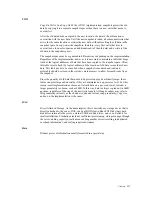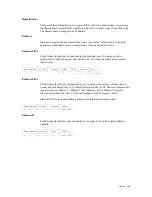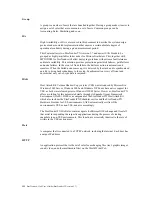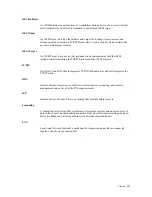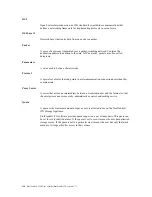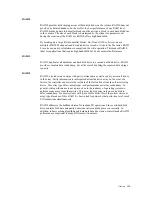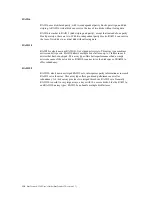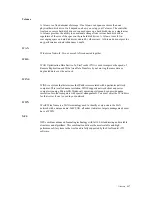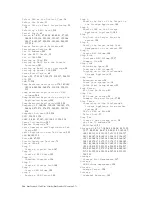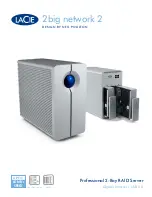
Glossary
331
RAID 60
RAID 60 uses distributed parity, with two independent parity blocks per stripe in each
RAID set, and disk striping. A RAID 60 virtual disk can survive the loss of two disks in
each of the RAID 6 sets without losing data. It works best with data that requires high
reliability, high request rates, high data transfers, and medium-to-large capacity.
RAID 60 provides the features of both RAID 0 and RAID 6 and includes both parity and
disk striping across multiple arrays. RAID 6 supports two independent parity blocks per
stripe. RAID 60 is best implemented on two RAID 6 disk arrays with data striped across
both disk arrays.
RAID 60 divides data into smaller blocks, then stripes the blocks of data to each RAID 6
disk set. RAID 6 divides the data into smaller blocks, calculates parity by performing an
Exclusive-Or (XOR) on the blocks, then writes the blocks of data and parity to each drive
in the array. The size of each block is determined by the stripe size parameter, which is
set during the creation of the RAID set.
RAID 60 can support up to 8 spans and tolerate up to 16 drive failures, though less than
total disk drive capacity is available.
RAID Level
A RAID level in the StorTrends® iTX software can be RAID 0, RAID 1, or RAID 5. For
specific hardware RAID levels, consult the RAID controller documentation.
Replication
The term,
replication
, is used in this document to describe the process of maintaining a
redundant storage area network (SAN) volume.
Replication Scheduling
In general, Snap Assisted Replication can be used in disaster recovery solutions where
one of the main constraints is the cost of link between the primary and secondary system.
The link may not be available all the time and there may always be a requirement to use
the link in a leased fashion. In such scenarios, the Snap Assisted Replication module can
be configured to do the replication only during pre-determined schedules. When
configured, replication will happen during the schedules and when delta-snap data are
available. If the schedule completes and even if delta-snaps are available, replication will
not happen, until the next schedule slot.
Router
A device or, in some cases, software in a computer, that is connected to at least two
networks and decides which way to send each information packet based on its current
understanding of the state of the networks it is connected to.
Summary of Contents for ManageTrends 2.7
Page 18: ...StorTrends 1300 User s Guide StorTrends iTX version 2 7 xviii...
Page 24: ...StorTrends 1300 User s Guide StorTrends iTX version 2 7 6...
Page 33: ...Chapter Two Chassis Set Up 15 Accessing the Inside of the System...
Page 60: ...StorTrends 1300 User s Guide StorTrends iTX version 2 7 42...
Page 64: ...StorTrends 1300 User s Guide StorTrends iTX version 2 7 46...
Page 70: ...StorTrends 1300 User s Guide StorTrends iTX version 2 7 52...
Page 100: ...StorTrends 1300 User s Guide StorTrends iTX version 2 7 82...
Page 106: ...StorTrends 1300 User s Guide StorTrends iTX version 2 7 88 Control Panel...
Page 236: ...StorTrends 1300 User s Guide StorTrends iTX version 2 7 218...
Page 256: ...StorTrends 1300 User s Guide StorTrends iTX version 2 7 238...
Page 277: ...Appendix E Replication Overview 259 Snap Assisted Replication Navigating with ManageTrends...
Page 281: ...Appendix E Replication Overview 263 Replication SAR view Primary Box SAR view Secondary Box...
Page 285: ...Appendix E Replication Overview 267 After Failover Operation in Secondary Box...
Page 300: ...StorTrends 1300 User s Guide StorTrends iTX version 2 7 282...
Page 308: ...StorTrends 1300 User s Guide StorTrends iTX version 2 7 290...
Page 330: ...StorTrends 1300 User s Guide StorTrends iTX version 2 7 312...
Page 356: ...StorTrends 1300 User s Guide StorTrends iTX version 2 7 338...

